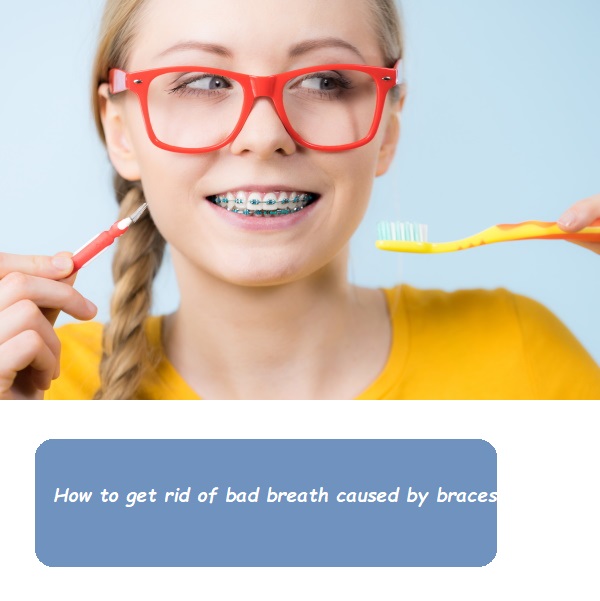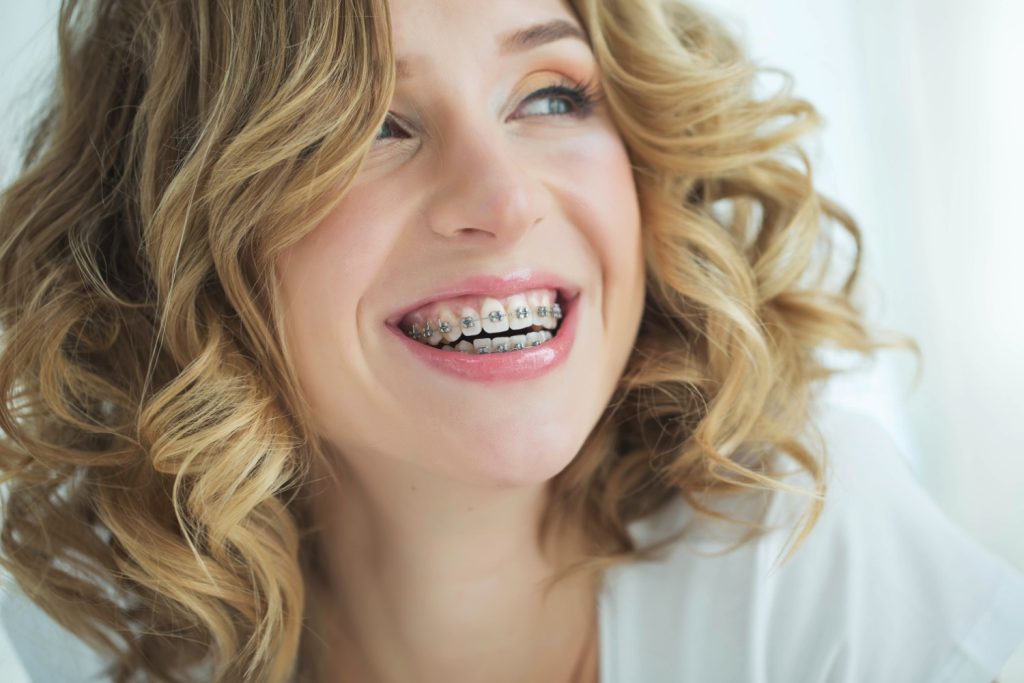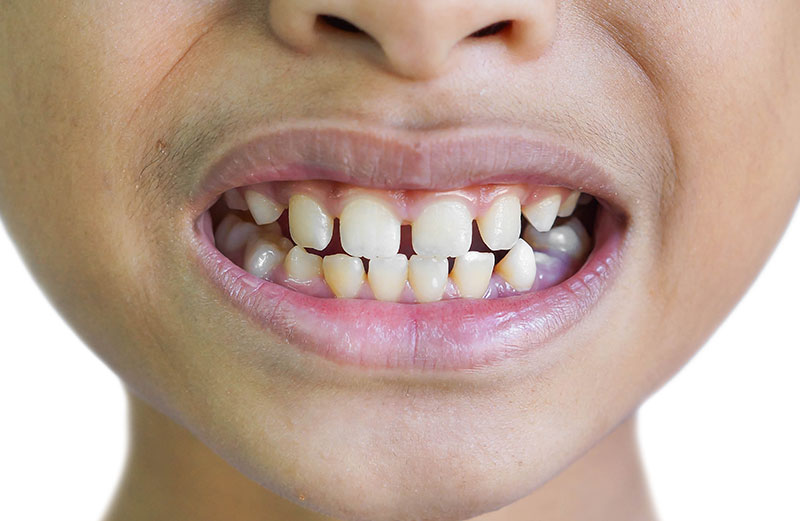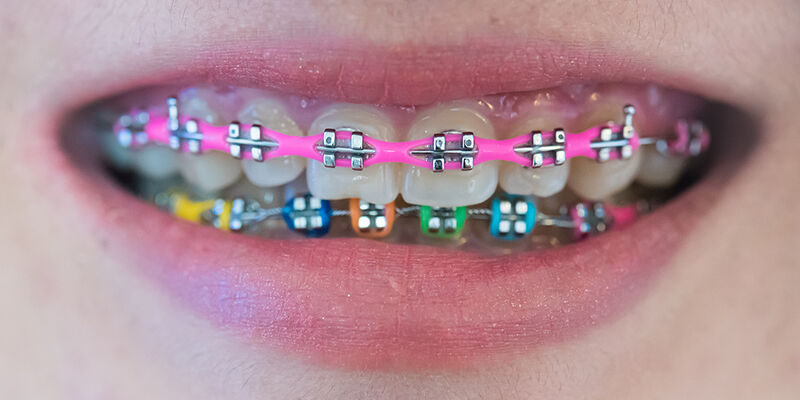How to get rid of bad breath caused by braces

Braces are an essential tool for straightening teeth and achieving a beautiful, healthy smile. However, wearing braces can sometimes lead to an unwanted side effect: bad breath. Bad breath, also known as halitosis, can be embarrassing and uncomfortable, but the good news is that it’s usually preventable and treatable. With the right techniques and habits, you can keep your breath fresh and your mouth healthy throughout your orthodontic journey.
In this comprehensive guide, we’ll explore the causes of bad breath with braces and provide practical tips on how to get rid of it and maintain good oral hygiene.
Understanding the Causes of Bad Breath with Braces
Before diving into the solutions, it’s important to understand why braces can sometimes cause bad breath. Braces create additional surfaces and crevices in your mouth where food particles, plaque, and bacteria can accumulate. This buildup can lead to bad breath if not properly managed.
1. Food Trapped in Braces
One of the most common causes of bad breath with braces is food particles getting trapped in the brackets, wires, and bands. These trapped particles can be difficult to remove, leading to bacterial growth, plaque buildup, and ultimately, bad breath.
- How It Happens: When you eat, small pieces of food can become lodged in your braces. If not removed through brushing and flossing, these particles can decay and contribute to unpleasant odors.
- Common Culprits: Sticky, starchy, and sugary foods are particularly likely to get stuck in braces and contribute to bad breath.
2. Plaque Buildup
Plaque is a sticky film of bacteria that forms on your teeth and braces. If not properly cleaned, plaque can harden into tartar, leading to gum disease and persistent bad breath.
- How It Happens: Plaque forms when bacteria in your mouth feed on sugars and starches from the foods you eat. If you don’t clean your teeth and braces thoroughly, plaque can accumulate and cause bad breath.
- Risks: In addition to bad breath, plaque buildup can lead to cavities, gum disease, and other oral health issues.
3. Dry Mouth
Dry mouth, or xerostomia, occurs when there’s a decrease in saliva production. Saliva plays a crucial role in washing away food particles and bacteria, so a lack of saliva can lead to bad breath.
- How It Happens: Braces can sometimes cause discomfort, leading to mouth-breathing or a reluctance to drink water, both of which can contribute to dry mouth.
- Risks: A dry mouth allows bacteria to thrive, leading to increased plaque buildup and bad breath.
4. Poor Oral Hygiene
Maintaining good oral hygiene is more challenging with braces, but it’s also more important than ever. Inadequate brushing, flossing, and cleaning can lead to the accumulation of food particles and bacteria, resulting in bad breath.
- How It Happens: If you don’t brush and floss effectively with braces, food particles and plaque can accumulate, causing bad breath and other oral health issues.
- Risks: Poor oral hygiene can lead to gum disease, cavities, and prolonged bad breath.
5. Orthodontic Appliances
Certain orthodontic appliances, such as elastics or removable retainers, can also contribute to bad breath if not cleaned regularly. These appliances can harbor bacteria and food particles, leading to unpleasant odors.
- How It Happens: Removable appliances like retainers can accumulate bacteria if not cleaned properly. Elastics can also trap food particles and bacteria, contributing to bad breath.
- Risks: Failure to clean these appliances regularly can lead to persistent bad breath and even oral infections.
How to Get Rid of Bad Breath Caused by Braces
Now that you understand the causes of bad breath with braces, let’s explore some effective strategies for getting rid of it and maintaining fresh breath throughout your orthodontic treatment.
1. Practice Thorough Brushing
Proper brushing is the cornerstone of maintaining good oral hygiene and preventing bad breath, especially when you have braces. Here’s how to brush effectively:
- Use a Soft-Bristled Toothbrush: Choose a toothbrush with soft bristles that can gently clean around your braces without causing damage. Consider using an orthodontic toothbrush, which is designed specifically for cleaning around brackets and wires.
- Brush After Every Meal: To prevent food particles from lingering in your braces, aim to brush your teeth after every meal. This will help remove food particles and prevent plaque buildup.
- Brush All Surfaces: Make sure to brush all surfaces of your teeth, including the front, back, and chewing surfaces. Pay special attention to the areas around your brackets and wires, where food and plaque can easily accumulate.
- Use Fluoride Toothpaste: Fluoride toothpaste helps strengthen your teeth and protect them from cavities. It also helps fight bacteria that can cause bad breath.
2. Don’t Skip Flossing
Flossing is crucial for removing food particles and plaque from between your teeth and around your braces. While flossing with braces can be challenging, it’s essential for preventing bad breath and maintaining good oral health.
- Use Floss Threaders: Floss threaders are tools that help you guide floss behind the wires of your braces, making it easier to clean between your teeth. They are especially helpful for getting into hard-to-reach areas.
- Consider a Water Flosser: Water flossers, or oral irrigators, use a stream of water to clean between your teeth and around your braces. They can be an effective alternative to traditional flossing and are particularly useful for braces wearers.
- Floss Daily: Make flossing a daily habit to keep your teeth and braces clean. Regular flossing helps prevent plaque buildup, which can lead to bad breath.
3. Rinse with an Antimicrobial Mouthwash
Rinsing with an antimicrobial mouthwash can help kill bacteria that cause bad breath and reduce plaque buildup. Mouthwash can also reach areas of your mouth that are difficult to clean with brushing and flossing alone.
- Choose an Alcohol-Free Mouthwash: Alcohol-free mouthwash is gentler on your mouth and won’t cause irritation. It’s a good choice for people with braces, as it helps maintain a healthy oral environment.
- Rinse Twice Daily: Rinse your mouth with mouthwash twice a day, preferably after brushing and flossing. This will help keep your breath fresh and your mouth clean.
4. Clean Your Tongue
Your tongue can harbor bacteria and food particles, which can contribute to bad breath. Cleaning your tongue regularly is an important step in maintaining fresh breath.
- Use a Tongue Scraper: A tongue scraper is a tool designed specifically for cleaning the surface of your tongue. It’s more effective than brushing your tongue with a toothbrush.
- Scrape Gently: Gently scrape your tongue from back to front to remove any buildup. Do this daily as part of your oral hygiene routine.
- Brush Your Tongue: If you don’t have a tongue scraper, you can also use your toothbrush to brush your tongue gently. Just make sure to clean the entire surface.
5. Stay Hydrated
Drinking plenty of water is essential for maintaining fresh breath, especially when you have braces. Staying hydrated helps keep your mouth moist, which is important for washing away food particles and bacteria.
- Drink Water Throughout the Day: Keep a water bottle with you and take sips throughout the day to stay hydrated and help rinse away food particles.
- Avoid Sugary and Caffeinated Drinks: Sugary drinks can contribute to plaque buildup, while caffeinated drinks can cause dry mouth. Stick to water to keep your mouth healthy and hydrated.
6. Watch Your Diet
Certain foods can contribute to bad breath, especially when you have braces. Paying attention to your diet can help you avoid foods that cause bad breath and maintain a healthy oral environment.
- Avoid Strong-Smelling Foods: Foods like garlic, onions, and certain spices can cause bad breath. While they may be tasty, they can leave lingering odors that are difficult to remove.
- Limit Sugary and Starchy Foods: Sugary and starchy foods can feed bacteria in your mouth, leading to plaque buildup and bad breath. Try to limit your intake of these foods and brush your teeth after eating them.
- Choose Fresh Foods: Fresh fruits and vegetables, like apples and carrots, can help clean your teeth as you eat them. They can also help stimulate saliva production, which is important for maintaining fresh breath.
7. Clean Your Orthodontic Appliances
If you wear removable orthodontic appliances, such as retainers or aligners, it’s important to clean them regularly to prevent bad breath.
- Brush Your Appliances: Use a soft-bristled toothbrush and a mild soap or toothpaste to clean your removable appliances. Rinse them thoroughly before putting them back in your mouth.
- Soak in a Cleaning Solution: You can also soak your appliances in a denture cleaner or retainer cleaner to remove bacteria and odors. Follow the instructions on the cleaner for best results.
- Store Properly: When not wearing your appliances, store them in a clean, dry case to prevent bacteria from accumulating.
8. Schedule Regular Dental Check-Ups
Regular visits to your dentist and orthodontist are essential for maintaining good oral health and preventing bad breath during your orthodontic treatment.
- Professional Cleanings: Regular dental cleanings help remove plaque and tartar that you may not be able to reach with your toothbrush and floss. These cleanings are especially important when you have braces.
- Check for Problems: Your dentist and orthodontist can check for any issues that may be contributing to bad breath, such as cavities, gum disease, or poorly fitting orthodontic appliances.
- Ask for Advice: If you’re struggling with bad breath, don’t hesitate to ask your dentist or orthodontist for advice. They can recommend additional products or techniques to help keep your breath fresh.
9. Use Orthodontic Wax
If your braces are causing discomfort or irritation in your mouth, orthodontic wax can help protect your cheeks, lips, and gums. This can prevent sores and infections that might contribute to bad breath.
- Apply Wax to Irritating Areas: Roll a small piece of orthodontic wax into a ball and press it onto any brackets or wires that are causing irritation. This will create a smooth surface that protects your mouth.
- Replace as Needed: Orthodontic wax can wear down or come off, so be sure to replace it as needed, especially if it starts to feel uncomfortable.
10. Consider Sugar-Free Gum
Chewing sugar-free gum can help stimulate saliva production, which is important for maintaining fresh breath. Saliva helps wash away food particles and bacteria, keeping your mouth clean.
- Choose Sugar-Free Gum: Make sure to choose gum that is sugar-free, as sugary gum can contribute to plaque buildup and cavities.
- Chew in Moderation: While sugar-free gum can help freshen your breath, it’s important not to chew too much, as it could put strain on your braces.
Additional Tips for Fresh Breath with Braces
In addition to the strategies mentioned above, here are some additional tips to help you maintain fresh breath while wearing braces:
1. Carry a Travel Oral Hygiene Kit
Keeping a travel-sized oral hygiene kit with you can help you stay on top of your oral care routine, even when you’re on the go.
- What to Include: Pack a travel toothbrush, toothpaste, floss, and mouthwash in a small pouch that you can take with you wherever you go.
- Use After Meals: Whenever you eat, use your travel kit to brush and floss your teeth. This will help prevent food particles from lingering in your braces and causing bad breath.
2. Be Mindful of Your Breathing
Mouth breathing can contribute to dry mouth, which can lead to bad breath. Try to breathe through your nose as much as possible, especially when you’re at rest.
- Practice Nose Breathing: If you find yourself breathing through your mouth frequently, try practicing nose breathing during quiet moments. This can help you develop the habit of breathing through your nose.
3. Avoid Smoking and Tobacco Products
Smoking and using tobacco products can cause bad breath and increase your risk of gum disease and other oral health issues. If you smoke, consider quitting to improve your breath and overall health.
- Quit Smoking: If you’re struggling to quit smoking, talk to your doctor or dentist for resources and support.
- Avoid Tobacco: In addition to smoking, avoid using chewing tobacco or other tobacco products, which can also contribute to bad breath and oral health problems.
4. Stay Consistent with Your Routine
Consistency is key when it comes to maintaining fresh breath with braces. Stick to your oral hygiene routine every day, and don’t skip any steps.
- Set Reminders: If you have trouble remembering to brush or floss, set reminders on your phone or create a checklist to keep you on track.
- Make It a Habit: The more you stick to your routine, the easier it will become. Over time, maintaining good oral hygiene with braces will feel like second nature.
Conclusion: Keeping Bad Breath at Bay with Braces
Bad breath can be an unpleasant side effect of wearing braces, but with the right habits and techniques, it’s entirely manageable. By practicing thorough brushing and flossing, using antimicrobial mouthwash, staying hydrated, and cleaning your orthodontic appliances regularly, you can maintain fresh breath and a healthy smile throughout your orthodontic treatment.
If you’re struggling with bad breath despite your best efforts, don’t hesitate to reach out to your dentist or orthodontist. They can provide personalized advice and help you address any underlying issues that may be contributing to the problem.
Have Questions About Bad Breath and Braces?
If you have any questions about how to keep your breath fresh while wearing braces or need more tips on maintaining good oral hygiene, reach out to your orthodontist. They can offer advice and support to ensure you achieve the best possible results from your treatment.








